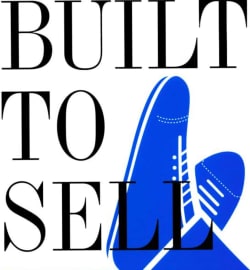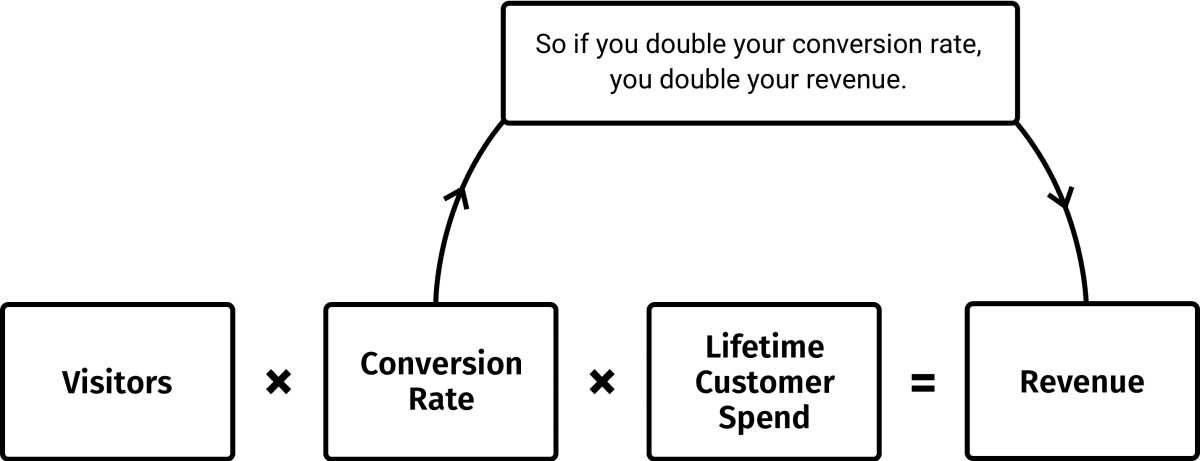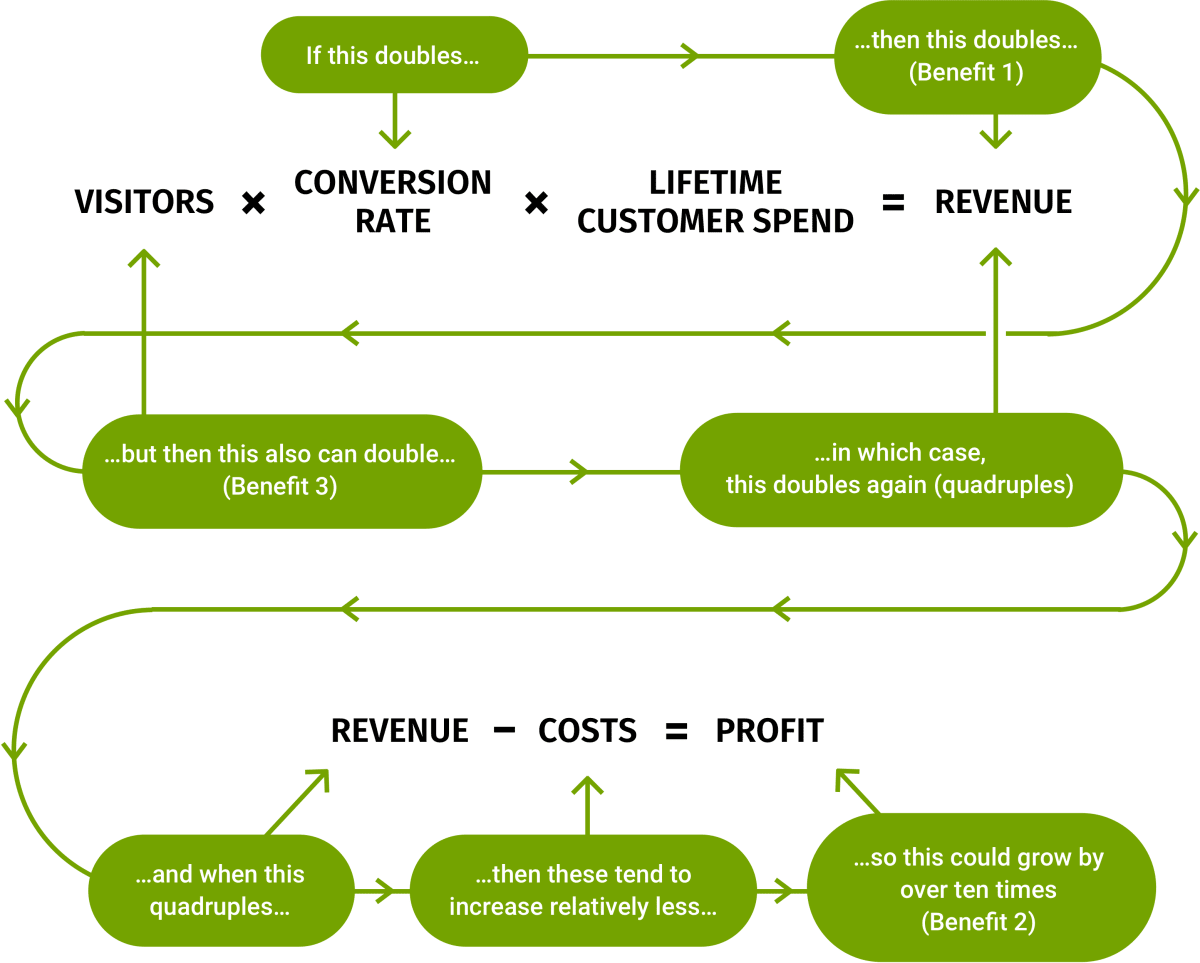How we plan to grow your profits
What you’ll get from this page
- What is conversion rate?
- Who we are, and the companies we have grown.
- We’ll apply the Pareto Principle (the “80/20” rule) to growing your profits.
- Why conversion is so important.
- Hardly anyone notices that the most successful web companies work completely differently.
- Why you’ll benefit personally.
- The CRE Methodology: How we do it.
- You get a multidisciplinary team of experts
- What our most successful clients have in common (and how you can be like them).
What is conversion rate?
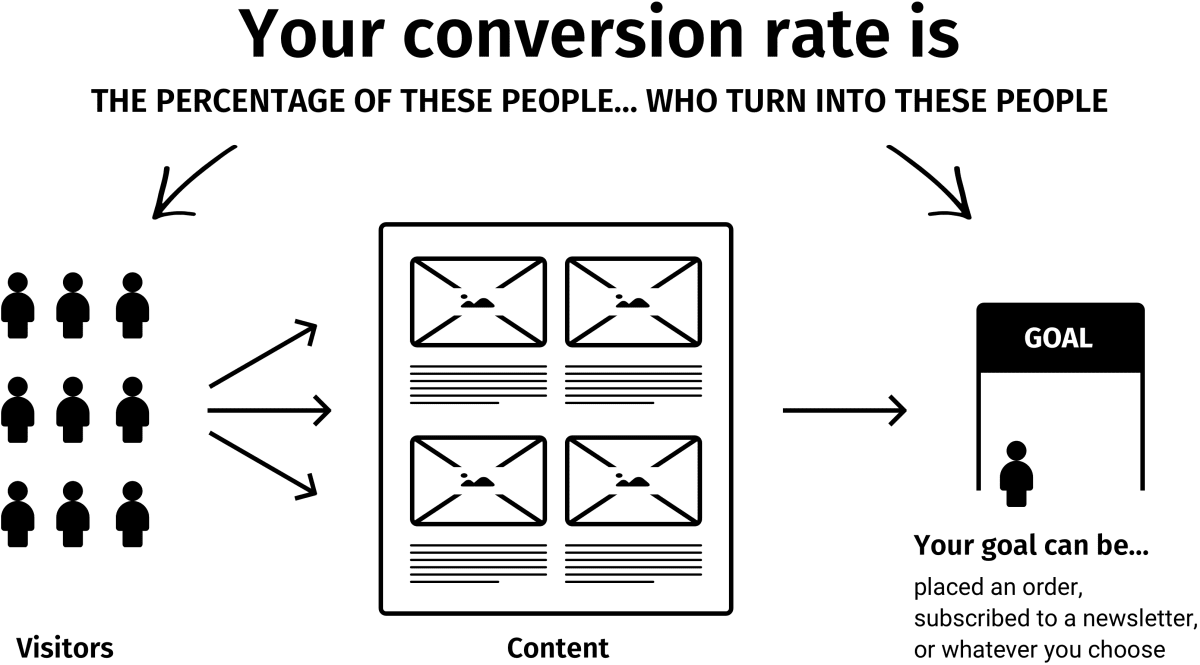
Your conversion rate is how many of the people on the left (your visitors) turn into the people on the right (the ones who actually reach the goal). It’s expressed as a percentage. The goal can be “place an order,” “subscribe to a newsletter,” or whatever you’re trying to achieve.
Who we are, and the companies we have grown
Between 2001 and 2006, our founders were in-house marketers for a company that rented phones to international travelers. Back then, most US and Japanese travelers couldn’t use their cell phones abroad, because the phones weren’t compatible with other countries’ networks.
Because the phones were travel products, each year the demand peaked every summer and declined every winter. But, also, the industry was in decline, because an increasing number of people were buying phones that worked abroad.
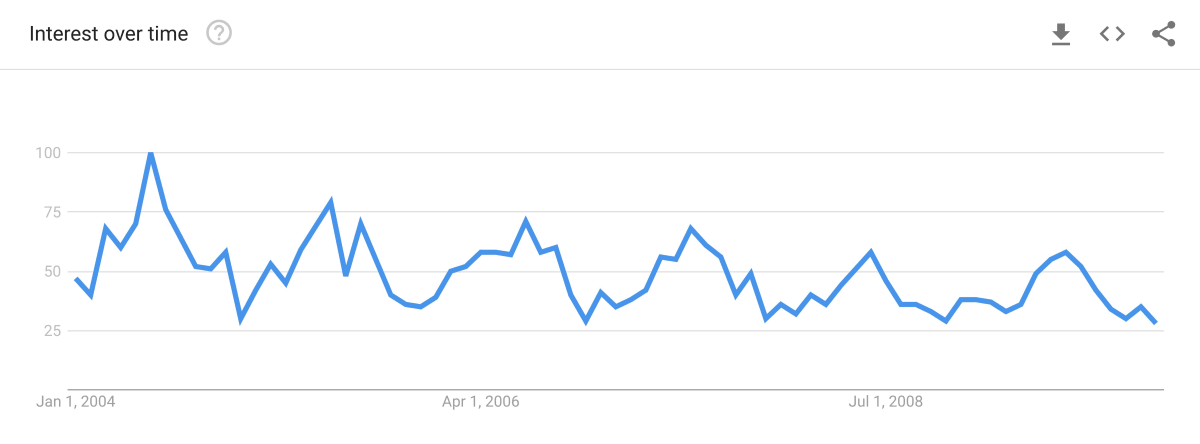
Regardless, our founders managed to grow the business rapidly. The following wall chart (which was created for the staff incentive program) shows the sales for the period 2004–2006:
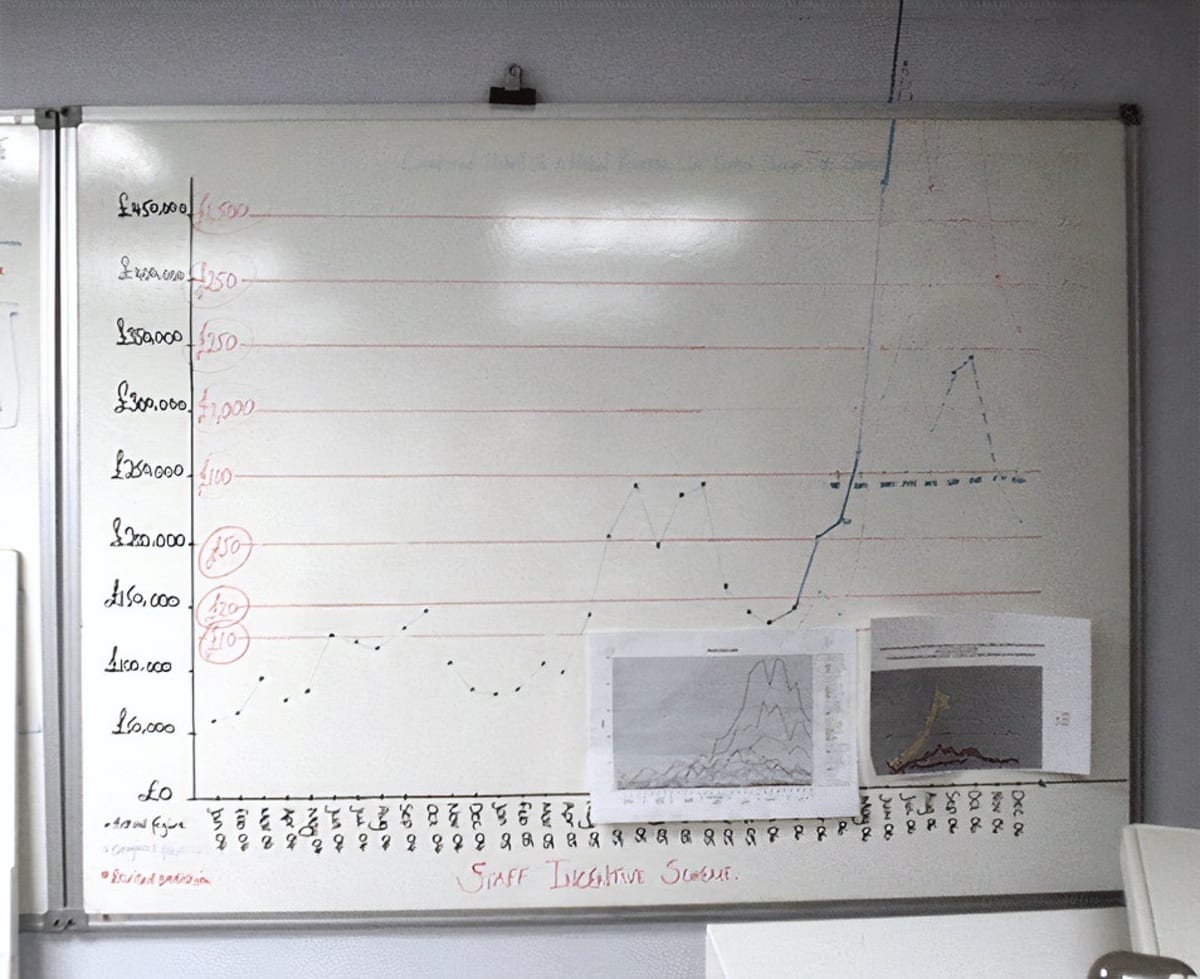
How did they do it?
By the summer of 2005, it wasn’t obvious what else could be done to grow the company. It was already number one in the search engines for all the industry’s top key phrases, and the company had had PR in many of the leading travel magazines.
Then, in November 2005, Ben and Karl attended the conference where Google Analytics was launched. They discussed how they could start analyzing their website’s visitors—and, in particular, how they could carry out A/B testing to optimize the conversion rates of the pages.
As a scientist, Karl had already carried out A/B tests and multivariate tests on large-scale industrial processing plants. It was clear to him that the opportunity for using the same techniques on web marketing could be absolutely huge.
They spent the next few months carrying out many A/B tests. As the graph shows, the sales sky-rocketed.
By the following summer, the sales line had gone off the whiteboard and onto the wall (they refused to rescale the axes).
Then, they wrote an article about what they had been doing, entitled “108 Ways to Use Google Website Optimizer.” (Google Website Optimizer was Google’s newly launched A/B-testing tool.) The article went viral, and Google contacted them out of the blue, inviting them to become one of the first consulting partners for Google Website Optimizer. They subsequently advised Google on how to develop its A/B-testing tool, and they visited Google’s offices to train its team members in how to get great results with the tool.
Over the last 17 years, CRE has continued to develop its methodology, and has grown many of the world’s most sophisticated web companies, including Amazon, Apple, Google, Facebook, and Dropbox—and many successful smaller companies.
CRE has also won two Queen’s Awards for Enterprise (the UK’s highest official award for business) and has written the book Making Websites Win, which is an Amazon #1 best-seller in 15 categories.
To see what’s possible with conversion rate optimization (CRO), we encourage you to view our video testimonials and case studies. They describe how we grew the businesses and the results they had. It’s amazing what’s possible with conversion.
We’ll apply the Pareto Principle (the “80/20” rule) to growing your profits
At CRE, we focus on the Pareto Principle (often known as the 80/20 Rule), which describes how, in most systems, 80% of the outputs come from only 20% of the inputs.
In other words, 80% of your results come from only 20% of your efforts.
The Pareto Principle is frustrating because it describes the problem but not the solution. It tells you that 80% of your results could come from the work you do on a Monday—and that you could take off the remainder of the week and still lose only 20%—but it doesn’t tell you what you should be doing on the Monday.
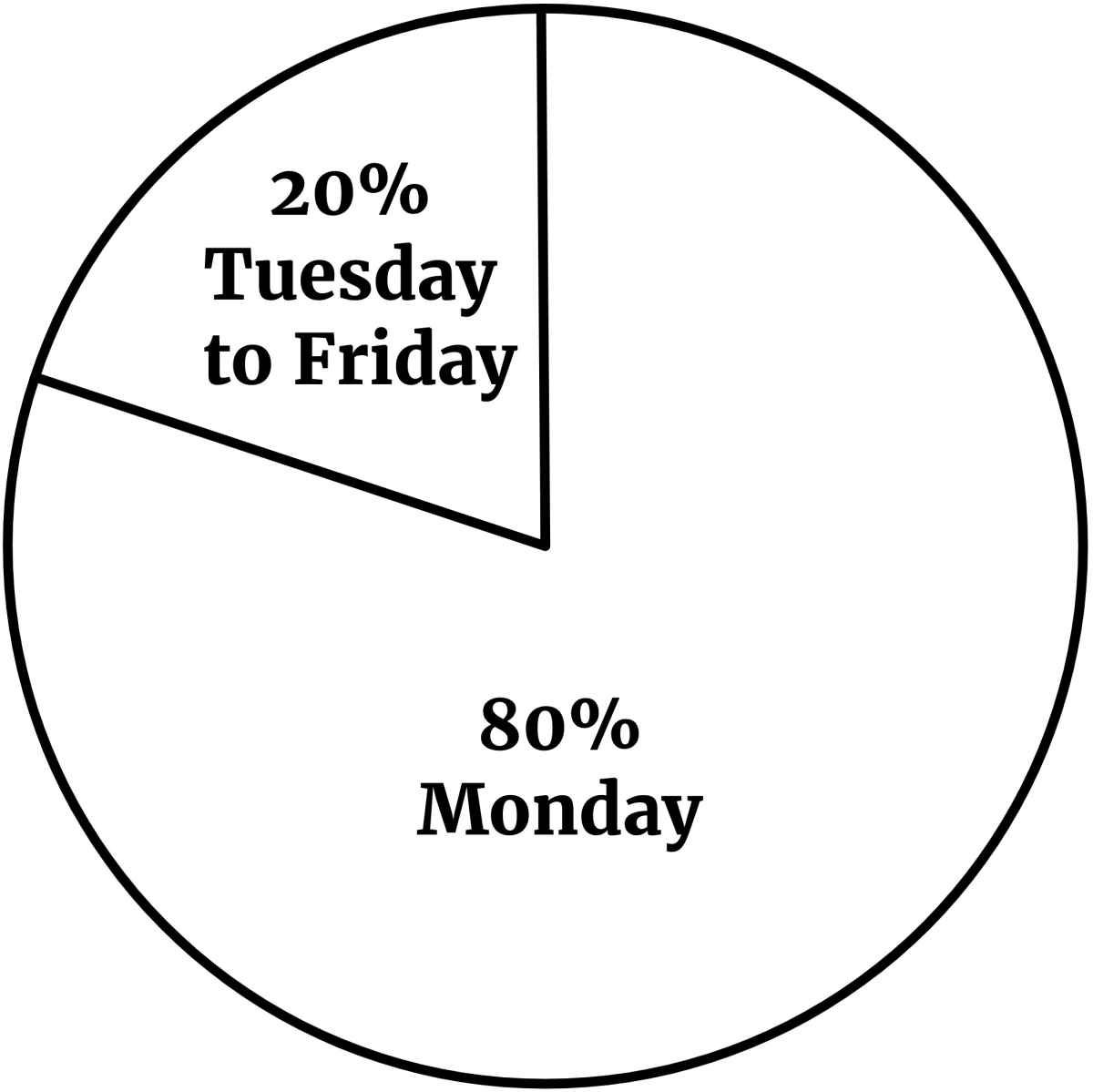
So at CRE, after each success, we ask, “What were the vital few activities that bore the most fruit? What were the 20% of activities that gave the best results?” The answers help us to become increasingly effective.
Why conversion is so important
For the travel-phone company, paid search had never been profitable. But once the company’s conversion rate had increased, paid search went from “economically not viable” to one of the company’s top sources of traffic and customers.
The company was then able to profitably, measurably invest up to a quarter of a million dollars per month in full-page ads in travel magazines. All because the whole funnel was optimized to the point that the company could afford to outbid its competitors for ad space that its competitors couldn’t afford.
Increasing your conversion rate is the difference between starting a fire with damp firewood and dry firewood. The higher your conversion rate becomes, the less you’re working against the laws of nature. The economics are on your side. All other aspects of marketing become easier.
Don’t forget that by increasing your website’s conversion rate, you’re making a website that your visitors like more and want to spend money with more. A good website has additional benefits, too, like better word-of-mouth and referrals.
Finally, web businesses scale amazingly well. The right strategy for almost every web business is to become big quickly—to get loads of customers and achieve economies of scale.
As your company grows, you can divide your fixed costs—such as the costs of web development and marketing—by a greater number of customers.
Hardly anyone notices that the most successful web companies work completely differently
Look inside any successful business, and you’ll find a powerful conversion engine. The story of every huge web business—Amazon, Google, Facebook, eBay, Amazon, YouTube—is not a story of traffic. It’s a story of conversion, of user experience, of creating a website customers want to use, and of strategic scaling. That’s how they got where they are, and why they’re so difficult to displace. That’s the position in which you want to be.
When you look inside those companies, you’ll find a crack team of engineers tuning the conversion engine—studying the flows through their sites, and optimizing the efficiency of those flows.
We want to make your company work in the same way. In the following article, we describe how they approach web design: “We have designed pages for more top-500 websites than any other company. Here’s why they are winning.”
Why you’ll benefit personally
By growing your company using CRO, you’ll benefit personally in two ways:
You’ll be part of a success story. Amazingly, most people have no quantifiable evidence that they have ever significantly grown a company. Thanks to CRO, many of our clients, followers, and team members have impressive success stories under their belts.
CRO is arguably the most valuable skill in business. It’s incredibly powerful to be able to change words so that customers are measurably happier, and the company’s stakeholders are happy, too, because they have made measurably more money.
CRO—being able to create flows that convert—is a timeless skill. And there aren’t many of those in web marketing. The skill can be applied to any media. In the early 1900s, the media were sales letters, catalog ads, and newspaper ads. Now, they are social media ads, search engine ads, landing pages, and online flows. In your personal life, they are the emails you send, the presentations you give, and almost everything you write. In the future, who knows what they’ll be … virtual reality flows, interactive voice flows, 3D motion gestures. At the core, they all require a process for optimizing the interaction between people and media.
Of course, you don’t need to learn all the details of what we’re doing, but if you want to, then that’s great with us.
The CRE Methodology: How we do it
Our methodology is radically different from what most marketers do.
Most web marketing is carried out by people making changes based on either best practices or their gut intuition. At best, they watch to see whether the numbers go up or down. At worst, they don’t even track it.
Either way, that’s a terrible way to make changes. Because in any system, there are many external factors—things that change every day, including traffic sources, traffic quality, and other changes to the business. The best approach is to eliminate those external factors by carrying out an A/B-test.
What is an A/B-test?
In an A/B-test, you show half of your visitors the existing version of a page (the A version), and the other half a new version (the B version).
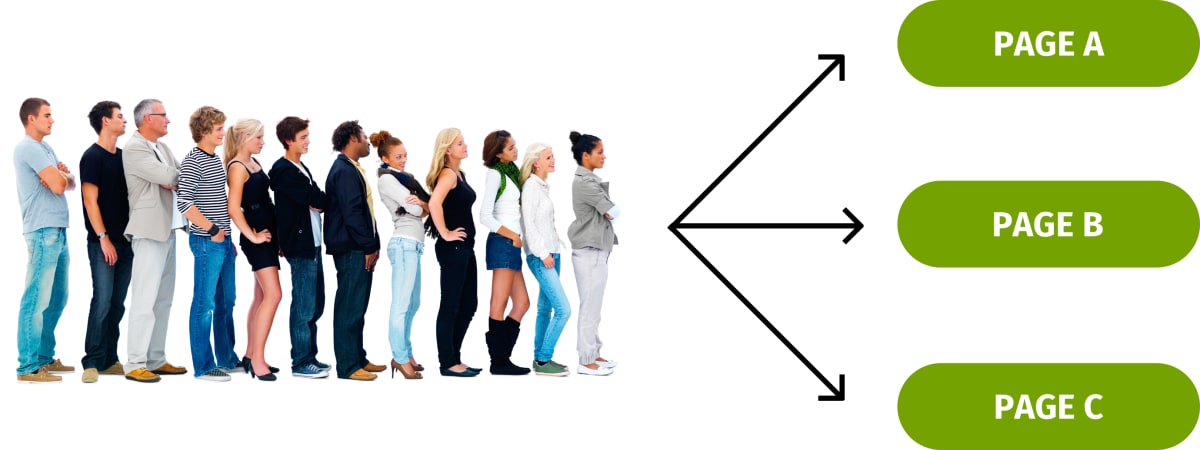
The A/B-testing software then counts how many conversions each version of the page has had, and tells you once there’s statistically significantly enough data to confidently state that one version is winning. Hopefully, it’ll be the new version of the page, because that’s what we’re rooting for.
We’ll then promote the winning version and get rid of the other one.
And then, we’ll repeat the process.
The approach is powerful because the improvement is continual. The new version of a page is kept only if we can prove it outperforms the old version. Guesswork is removed. Upward changes are kept, and downward changes are discarded.
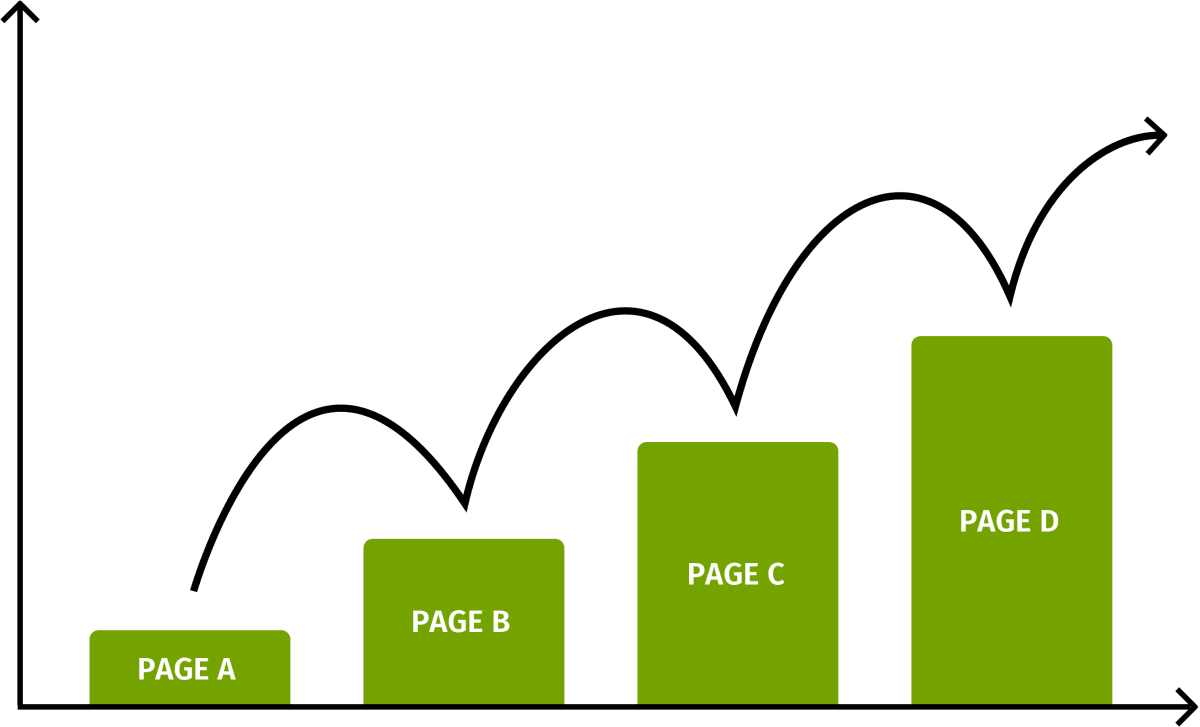
A/B-testing is a type of split-testing. Other types of split-testing include tests that have more than one challenger (for example, A/B/C tests, A/B/C/D tests, etc.) and tests that vary several elements independently at the same time (multivariate tests). However, the term A/B-testing is now commonly used to refer to all types of split-testing.
Measurement matters
Measurement is unusual in marketing. In most companies, every website decision is made without being tested.
You’d be amazed how many clients come to us saying, “Our web design agency has redesigned our website, and the new website is underperforming the old one.”
It should never be allowed to happen.
By A/B testing, each change is kept only if it has improved things.
Remember, if the page doesn’t win, the loss lasts only for the test’s duration. But a win lasts a lifetime. So you get to keep the winners and throw away the losers.
Garbage in, garbage out (GIGO)

Garbage in, garbage out (GIGO) means if you put garbage into any system, you’ll get garbage out—albeit “optimized garbage.”
It’s true of A/B-testing. If you test garbage, your results will be garbage. So you need to be testing the right things. You need to be making the right changes to your website.
Roger Longbotham, Amazon’s former Senior Statistician, described it as follows:
“What you place upon the statistical framework is what ultimately determines the attractiveness of your test results.”
So it’s not about the software; it’s about what you test. It’s about the experiments you run with the software. That’s what we focus on.
Ways to grow faster
There are two ways to grow faster. You can increase the size of each improvement, or you can reduce the time between steps.
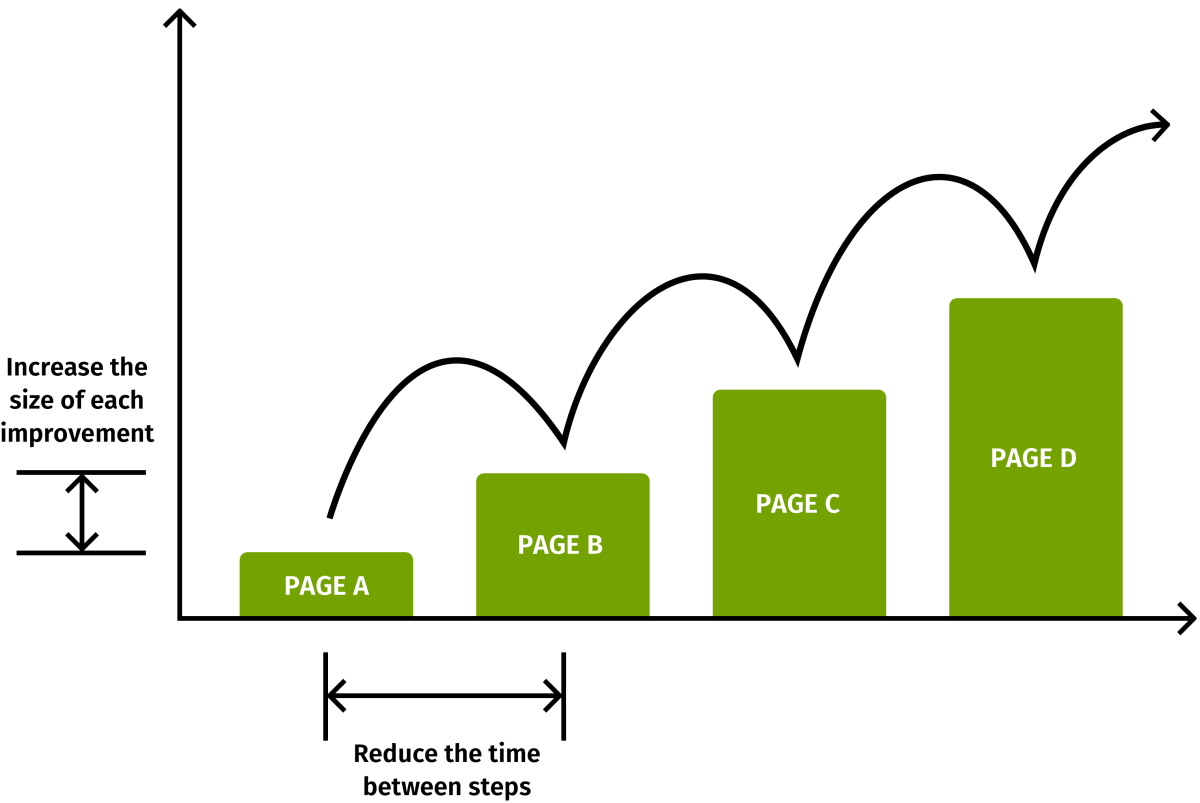
We focus on both. Our goals are twofold:
- Design tests that are likely to give large improvements.
- Reduce the time between tests.
Most people make the mistake of starting their A/B-testing by designing their experimental web pages. They get the software, and then they decide to design and test a new version of a page.
They’ll say…
“I’ve heard that headlines need to contain the top three benefits, and the sales copy always needs to be in short snappy sentences, and bullet points should be in groups of three.”
Then they carry out a test, and are surprised that the results don’t reach significance.
Their approach is about as sophisticated as a car mechanic who says, “I’ve heard that monkey wrenches work well, and I’ve noticed that screwdrivers work well, too, so I’m going to take to this car with a monkey wrench and a screwdriver.”
It’s ridiculously unsophisticated, and yet, amazingly, it’s what most people do when it comes to conversion.
The nine steps of the CRE Methodology
We approach CRO as follows:
The “Rules of the Game” (and how to win at it): We agree upon the strategy—what you’re trying to achieve for your company, what the goals are (and should be), and what our metrics should be. That way, we’re all agreed on what we’re aiming to improve, and the direction in which your company is going.
Understanding (and tuning) existing traffic sources: We identify which visitors are arriving on which pages and why—so we know which pages to run tests on.
Understanding your visitors (particularly the non-converting ones): The only way to increase your website’s conversion rate is by persuading some of the visitors who currently aren’t being persuaded. We need to find out more about them, find out why they aren’t being persuaded, and then fix that problem.
Advanced market intelligence: Your business doesn’t exist in a vacuum. Your visitors are making decisions, not just about your website, but also about the websites of your competitors. So we need to look through your competitors’ websites and discover both what their strengths and weaknesses are relative to yours, and what your positioning should be relative to them, so you can take the biggest slice of the market.
Spotting the hidden wealth in your business: Every single client of ours has had aspects of their business that would be very persuasive to visitors if only the visitors saw those things. Perhaps your company already has media mentions about how quickly it’s growing, or customer testimonials proving that its service is excellent. We need to find out all of those persuasive assets.
Creating your experimental strategy: We will inevitably come up with many more ideas than can be implemented, so it’s important we prioritize and strategize which to start with, and decide which will have the biggest impact with the least implementation effort. Only then—once we know all the information—are we in a position where we can design experimental challenges that are likely to wipe the floor with the controls.
Designing your experimental web pages (your “challengers”): Creating the experimental pages involves all the skills of CRO, as described above. Outrageously, this is the stage at which many people begin. They just paste into their website all the things they found in a “book of best practices.” Imagine how futile their efforts are without all the insights gleaned from steps 1–6—without doing all the things you’d do in a real-life store: Finding out why visitors aren’t converting—finding out what would really appeal to them, and then actually doing something about it. The first six steps are powerful. They are what get us great results.
Carrying out experiments on your website: There are many software platforms for tracking and testing, each of which has its own benefits. If you don’t already have one in place, we’ll offer you some suggestions based on your needs.
Transferring your winning campaigns into other media: One huge advantage we have as web marketers is that we can carry out experiments at a much higher velocity than offline marketers. Many of CRE’s clients have discovered that the benefits multiply when they take their optimized online campaigns and roll them out into offline media—where you can get huge volumes and scalability. Their website is effectively an agile testbed from which they can optimize all of their marketing.
You get a multidisciplinary team of experts
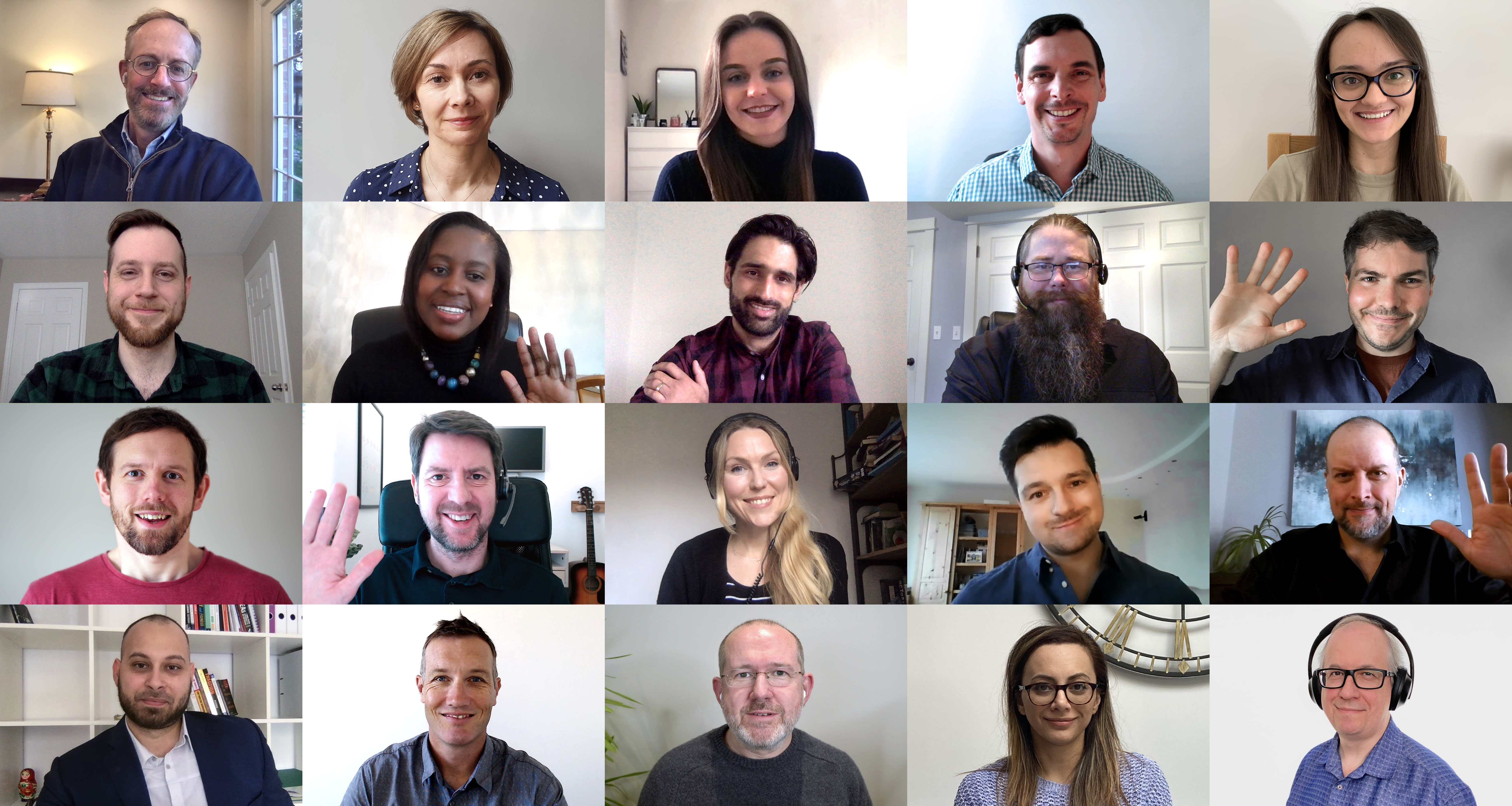
- Your Lead Consultant is personally responsible for you getting great results, taking you and your team through our process, applying it to your business, and creating the initial test ideas.
- Our Research, Usability and Analytics department gathers data on your visitors, to identify the bottlenecks (and missed opportunities) that are preventing your company from growing more quickly. The insights form the backbone of the CRE Methodology.
- Our Copywriting and Design Team knows how to beat the world’s hardest-to-beat controls. The team members write copy, create wireframes, and then turn them into world-class optimized page designs—for your site, for your landing pages, and sometimes for other media and channels.
- Our Development Team greatly increases the rate at which we can create tests for you, no matter how resource-constrained you are.
- As we help your business grow, your CRO needs may change. Our business development team will ensure that our support can grow as you grow.
- And finally, you get our entire CRE Consultancy Team. We make the most of our team’s wealth of knowledge. For example, we host regular in-house “hot seat” sessions, during which our consultants collaborate, competing to see who can come up with the best ideas and strategies. So you get the best ideas from all of our CRO experts.
Our team members really are world-class at CRO. We spend a lot of time and effort attracting and training them. Our recruitment process is rigorous and arduous. Also, we have always been remote-first, so we can attract the best people wherever in the world they happen to live. And if someone’s good, we do everything we can to take them on.
In short, you have a fantastic team of people helping you get great results.
What our most successful clients have in common (and how you can be like them)
We’ve had the privilege of working with many of the web’s most sophisticated companies. And we have spotted patterns in the ways they work. Our most successful clients have the following elements in common:
Element 1: They share our values
We work best with clients who share our values—or at least understand them. For example, we tend to hyper-focus on results, to the extent of neglecting a lot of the niceties that many other companies would do. It would help if you could read our “About Us” page—particularly the sections about our mission and values. At the very least, it will explain why we work in some of the unconventional ways we do.
Element 2: They have a bias for action
Facebook famously had the following posters on its walls:
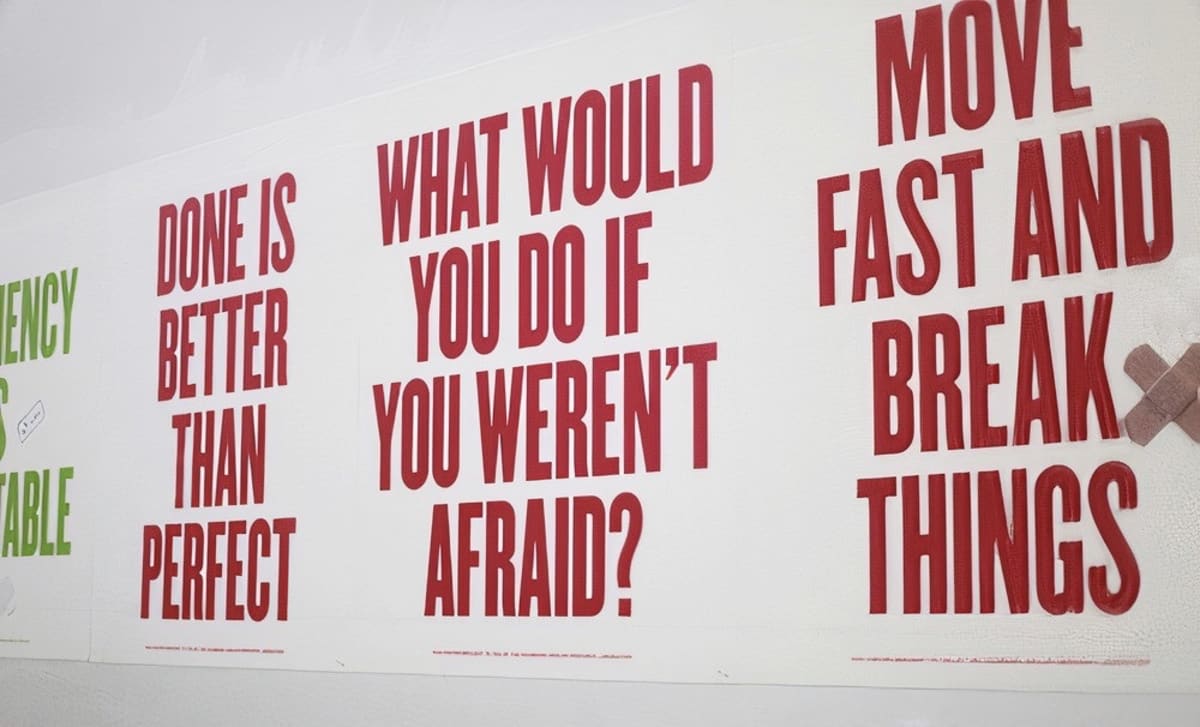
The one on the right—“Move fast and break things”—describes a secret to success that is almost the opposite of most companies’ behavior.
Facebook appreciates that building a business is a race against the clock. Speed of implementation is a winning behavior. Implementing too quickly is often less dangerous than implementing too slowly. Fortunately, in many web businesses, it’s hard to truly break things.
Fortunately, most web decisions have an undo button.
Amazon’s Jeff Bezos distinguishes between reversible and irreversible decisions. He encourages his team members to make reversible decisions quickly.
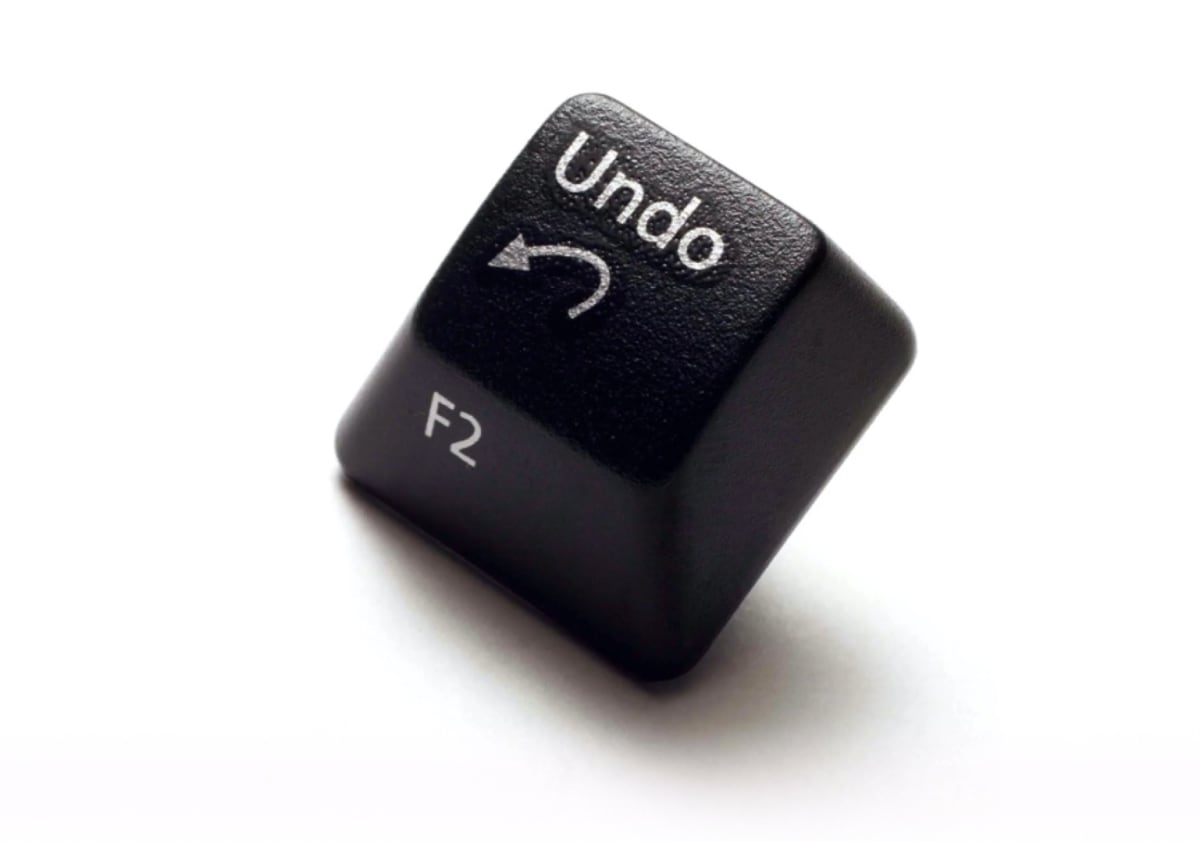
In offline businesses, decisions take a long time to undo. In web businesses, they can be undone in seconds. If any change doesn’t increase your profits, you just hit undo, and you’re back to where you were. To grow quickly, make the most of that advantage.
Also, having a bias for action is liberating, because action begets action. Speed is a habit that compounds.

Years ago, we saw one of those TV shows where an expert is called in to troubleshoot a company. The company owned a chain of coffee stands. Its owners were deliberating whether to sell KitKat wafer bars or their in-house brand of chocolate bars. After half an hour of debate, the troubleshooter recommended they should sell KitKats from half of their stands and their own-brand chocolate bars from the other half. After a week or two, they could simply calculate which had made more profit. The troubleshooter’s suggestion allowed the decision to be postponed until all the facts were in. Plus, the debate ended immediately. When an answer is just an A/B-test away, there’s no need for speculation. The truth lies at the end of a test.
Ineffective companies try to make decisions before the answers are in, so they postpone activity. Successful companies front-load actions—and postpone decisions until the answers are in.
Element 3: They eliminate productivity bottlenecks (the “cup of coffee” test)
You might expect that the most sophisticated companies would benefit the least from our involvement—that they already could do CRO for themselves, so why would they need CRE?
On the contrary, when we work with clients that have already achieved a lot, we find that things tend to go even better—largely because everything moves much faster. We often describe this in terms of the “cup of coffee” test.

Every company has what you might call a “metabolic rate”—the speed at which things tend to happen. We find it useful to imagine what would happen if someone were to ask a given company to carry out a simple generic task, like making a cup of coffee. Some companies would have finished making the cup of coffee three minutes later. Others would still be going through the process six months later. There’d be bottlenecks, often in the form of technology, people, and bureaucracy.
Our clients tend to be efficient and fast-moving. But every company has bottlenecks that slow things down. You probably already know where your company’s bottlenecks are—the parts that would be slowest at the “cup of coffee” test.
- In some companies, the bottlenecks are bureaucracy, process, standards, and policies.
- In other companies, they are people or departments that are already overworked and over-capacity (they can be spotted because they already have a backlog of work in their inboxes).
Please bring your bottlenecks to our attention, and tell us how you currently navigate them, so we can hit the ground running, and help you to further increase your speed.
There are two levels:
- On one level, we are growing your profits.
- But, also, we want to help you become one of the fastest, most sophisticated teams. Many of our clients say the most significant thing we provide for them is to instill a culture of testing. We haven’t only grown their businesses. We have changed the way they get things done.
Element 4: The decision-makers and doers are both involved
A successful team must contain the people who have the authority to make decisions, so they can remove bottlenecks as they come up.
But it must also contain the doers—the people who are going to be doing the work. Those people know what’s happening, and why it’s happening.
It helps a lot if both are involved.
Element 5: Everyone is pulling in the same direction

It’s essential that we understand anyone’s objections or issues, because things happen much faster when everyone’s pulling in the same direction. The difference is huge: 1+1+1=3, but 1+1-1=1. So if there’s anyone in your team who isn’t won over or who has doubts, please let us know—and don’t let it go ignored. In particular, we don’t like to tread on anyone’s toes, so let us know if there are any potential conflicts of interest we need to bear in mind.
What our most successful clients have in common—a recap
In summary, we ask you to do the following:
- See our mission and values, so you understand why we hyper-focus on results (and neglect some of the niceties).
- Strive to have a bias for action. Be willing to test things.
- Help us identify potential bottlenecks and let us know how we can overcome them.
- Make sure your decision-makers and doers are involved.
- Let us know if there are any conflicts of interest, or if anyone is not on-side.
Other useful resources
If you’d like to explore conversion rate optimization further, the following pages contain more useful concepts, principles, tips, and tricks for growing a company fast:
- The kind of results that companies have achieved with CRO.
- Why CRO benefits not just your company but also your career.
- Several non-obvious reasons why CRO is more important than it might appear.
- The seven steps of research-based CRO, and why they are much more effective than the more commonly used methods.
- We have designed pages for more top-500 websites than any other company. Here’s why they are winning.
Please let us know if you have any questions.
We look forward to getting started, and sharing our plan for how we’ll grow your business!
© 2024 Conversion Rate Experts Limited. All rights reserved.

































































